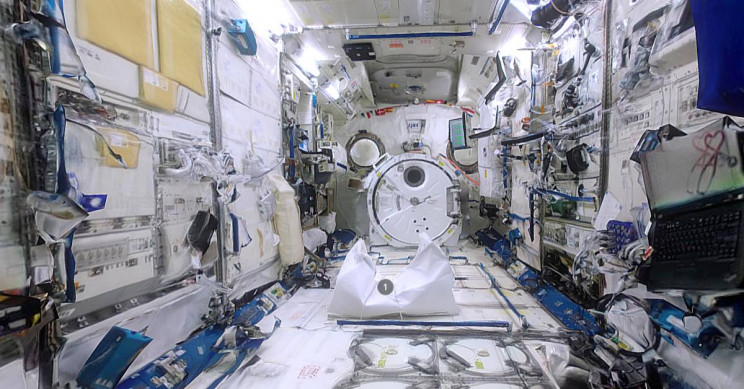If you ever wanted to visit the International Space Station, then you are in luck. An amazing new feature on Sketchfab enables you to enjoy a virtual tour of the ISS that is about as close to the real thing as you can get. It is a mesmerizing photogrammetric 3D reconstruction and it starts at Kibo which is the Japanese node of the orbital station.
The system’s description of Kibo reads, ‘The laboratory is renowned for its volume and extra features such as its external robotic arm, an airlock to send experiments outside, and an external facility to expose experiments to space. Nanosats can be launched from Kibo through the airlock, making the Station a base for deploying satellites as well as a weightless research center for biology, physics, and medicine’.
Moving forward, we have Columbus – the European module and the Raiz/Sketchfab’s description states, ‘Launched on 7 February 2008 on Space Shuttle Atlantis. The laboratory is ESA’s largest single contribution to the Station and Europe’s first permanent research facility in space. The state-of-the-art facility offers 75 cubic meters of workspace and contains a suite of research equipment. External platforms support experiments and applications in space science, Earth observation, and technology’.
The Harmony was created in 2007 to link Columbus, Kibo, and Destiny laboratories. It is where astronauts’ beds are located. NASA’s laboratory is called Destiny and it sure is a sight to behold. The Raiz/Sketchfab description reads, ‘Launched on 7 February 2001 on Space Shuttle Atlantis, the American module is the heart of the non-Russian part of the Station according to ESA astronaut Samantha Cristoforetti (who took the pictures to create this view). The module allows experiments to be performed in many disciplines, from biology to physics, including a rack for burning liquids in weightlessness and the European Microgravity Science Glovebox’.
Now we are at the Unity module. Do not underestimate on account of its size because it does play a crucial role. Unity module’s description reads, ‘Launched on 4 December 1998 inside Space Shuttle Endeavour, it was joined to the Russian Zarya module two days later, forming the basis of the International Space Station. Also known as Node-1, the cylindrical module has six docking ports to connect visiting spacecraft and other modules’.
And now we are at the Quest Joint Airlock – the main airlock for the International Space Station. It was designed to host spacewalks for both Orlan spacesuits and the Extravehicular Mobility Unit (EMU). It was opened on STS-104 on July 14, 2001. Its description in Sketchfab goes on to say, ‘Before Quest was attached, Russian spacewalks using Orlan suits could only be done from the Zvezda service module, and American spacewalks using EMUs were only possible when a Space Shuttle was docked. The arrival of the Pirs docking compartment on September 16, 2001, provided another airlock from which Orlan spacewalks can be conducted’.
The Tranquility node on the International Space Station was launched on Space Shuttle flight STS-130 in February 2010. It is responsible for providing the life-support for the ISS. Its description on Sketchfab states, ‘Part of Tranquility is ESA’s Cupola observation module, a seven-window dome-shaped structure from where the Space Station’s robotic arm, Canadarm 2, is operated as it offers a panoramic view of space and Earth. Launched on Space Shuttle flight STS-130 in February 2010, Node-3 was attached to the port side of Node-1 Unity’.
After Tranquility, you will walk into the showers and toilets. The toilets are located in the Zvezda and Tranquility modules. Lastly, you will reach the Cupola – ESA-built observatory module of the ISS. It was launched aboard Space Shuttle mission STS-130 on 8 February 2010 and was affixed to the Tranquility. Once the Cupola was attached, the ISS reached 85% completion.
Do check out this amazing photogrammetric 3D reconstruction of the ISS by Sketchfab and let us know what you think of it.

